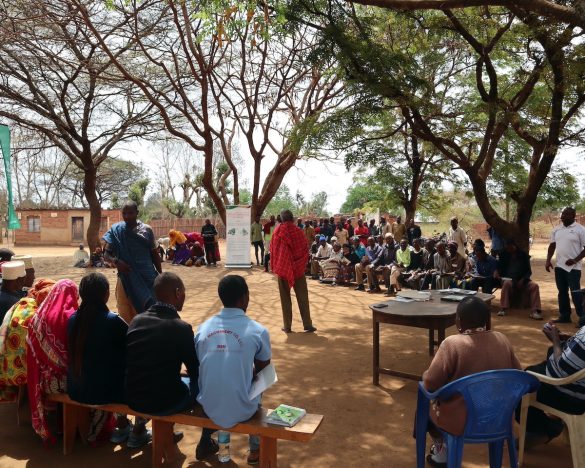No one size fits all! Lessons from legume–cereal rotations in smallholder farms
Warning: Trying to access array offset on value of type bool in /home/africarising/public_html/wp-content/plugins/slideshare/slideshare.php on line 162
Warning: Trying to access array offset on value of type bool in /home/africarising/public_html/wp-content/plugins/slideshare/slideshare.php on line 165
Smallholder farming households in much of sub-Saharan Africa are distinctly diverse within and across communities. Taking this reality into account when introducing technologies to farmers is therefore a key step, particularly in sustainable intensification under low external nutrients input cropping systems. This is because technologies and/or crop spatial arrangements introduced to farmers in this context need to optimize use of available resources and at the same time fit with the different levels of resource endowment existing within the smallholder farming communities.
Through its research-in-development work on legume–cereal rotations in Tanzania and Malawi, Africa RISING has established that these rotations work better for larger farms, while intercropping targeted at smaller farms ensures crop diversity, while giving an opportunity for legumes to be grown, thereby bringing associated nitrogen-fixation ecological benefits. Through this work, the team has worked with smallholder farmers to refine technologies that present the best opportunity to increase productivity while also tapping into ecological provisions of leguminous crops for enhanced nitrogen cycling, and cropping arrangements/sequences that respond to farm sizes and agro-ecologies and integrate farmers production goals.
These efforts have identified some key technologies (listed below), that can transform stagnated farms. The technologies offer entry points for increasing land productivity and maintaining diversified crop production for food and income security. Extension systems and development partners need to be supported to disseminate and support adoption of the technologies.
- The pigeon pea-groundnut intercropping system that results in groundnut grain yields that are comparable to productivity in sole cropping, with additional pigeon pea grain. This technology is associated with large nitrogen inputs, ensuring successful maize production that is recommended as the sequence crop.
- Maize-pigeon pea intercropping mixtures: higher proportions of pigeon pea in intercropping (1:2 ratio of maize to pigeon pea) are more beneficial to farmers in low agro potential areas.
This poster summarizes experiences and insights gained by the project team when introducing these technologies to smallholder farmers in Tanzania and Malawi.
Written by Regis Chikowo, Michigan State University




